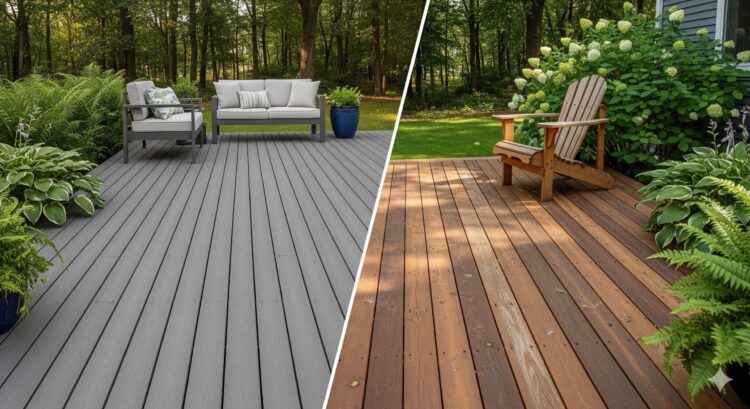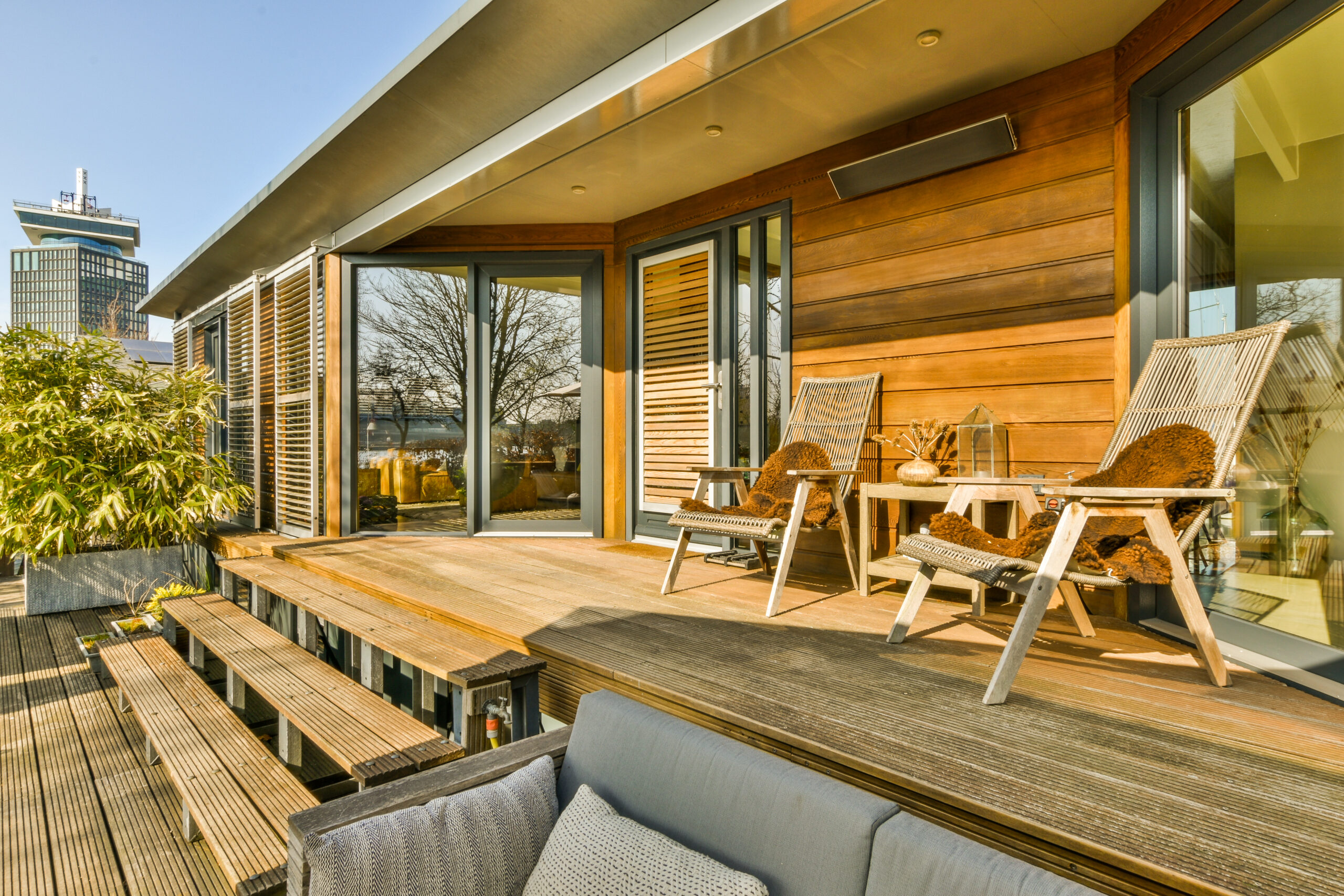One of the key decisions homeowners face when building a deck is choosing between composite materials and natural wood. Both options have unique benefits, but their durability and lifespan can vary significantly. For those considering composite decking, understanding how each material performs over time is essential to making a well-informed decision.
What Is Composite Decking?
Composite decking combines recycled plastic and wood fibers to create a durable, low-maintenance material that outlasts natural wood. Unlike traditional wood, it resists warping, splintering, and decay. With uniform shape, texture, and color, it offers a polished, cohesive look and easy installation. Built to handle everything from summer heat to winter freeze-thaw cycles, composite decking is a reliable, long-lasting choice for any outdoor space.
What Is Wood Decking?
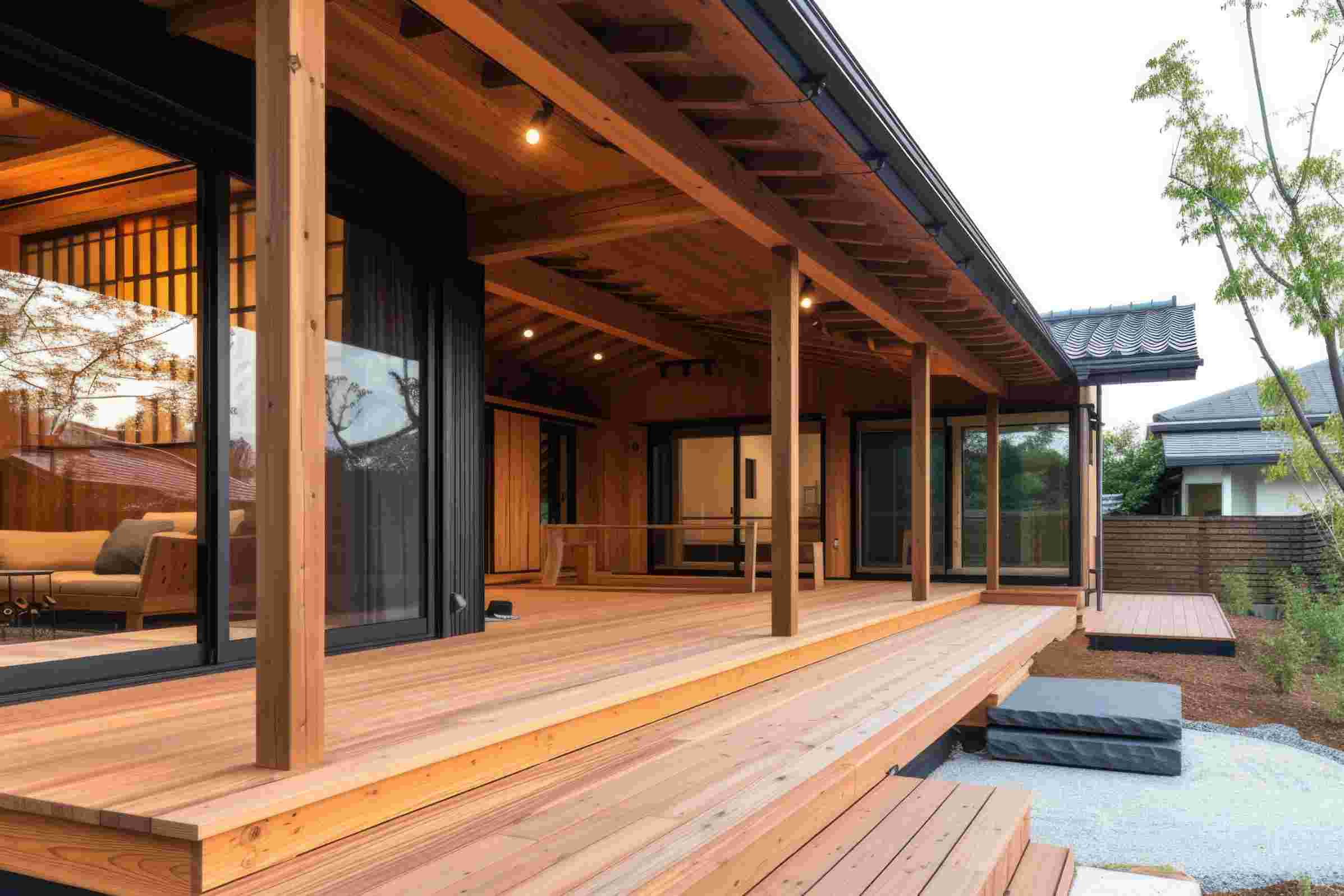
Traditional wood decking is usually made from pressure-treated lumber, cedar, redwood, or tropical hardwoods. While wood decks offer a classic, natural look and are often cheaper upfront, they need regular maintenance to last. Being a natural material, wood can expand, contract, and weather over time. Without proper care, it may suffer from moisture damage, rot, warping, or splintering. Regular upkeep is key to keeping it durable and looking good.
Durability: Which Lasts Longer?
Composite decking is highly durable compared to traditional wood. Designed to resist decay, insects, and moisture, it delivers long-lasting performance with minimal maintenance. A composite deck typically lasts 25 to 30 years without major fading or structural issues, while wood decks last 10 to 15 years with proper upkeep. Without regular staining, sealing, and cleaning, wood deteriorates much faster, especially in damp conditions.
Maintenance Requirements
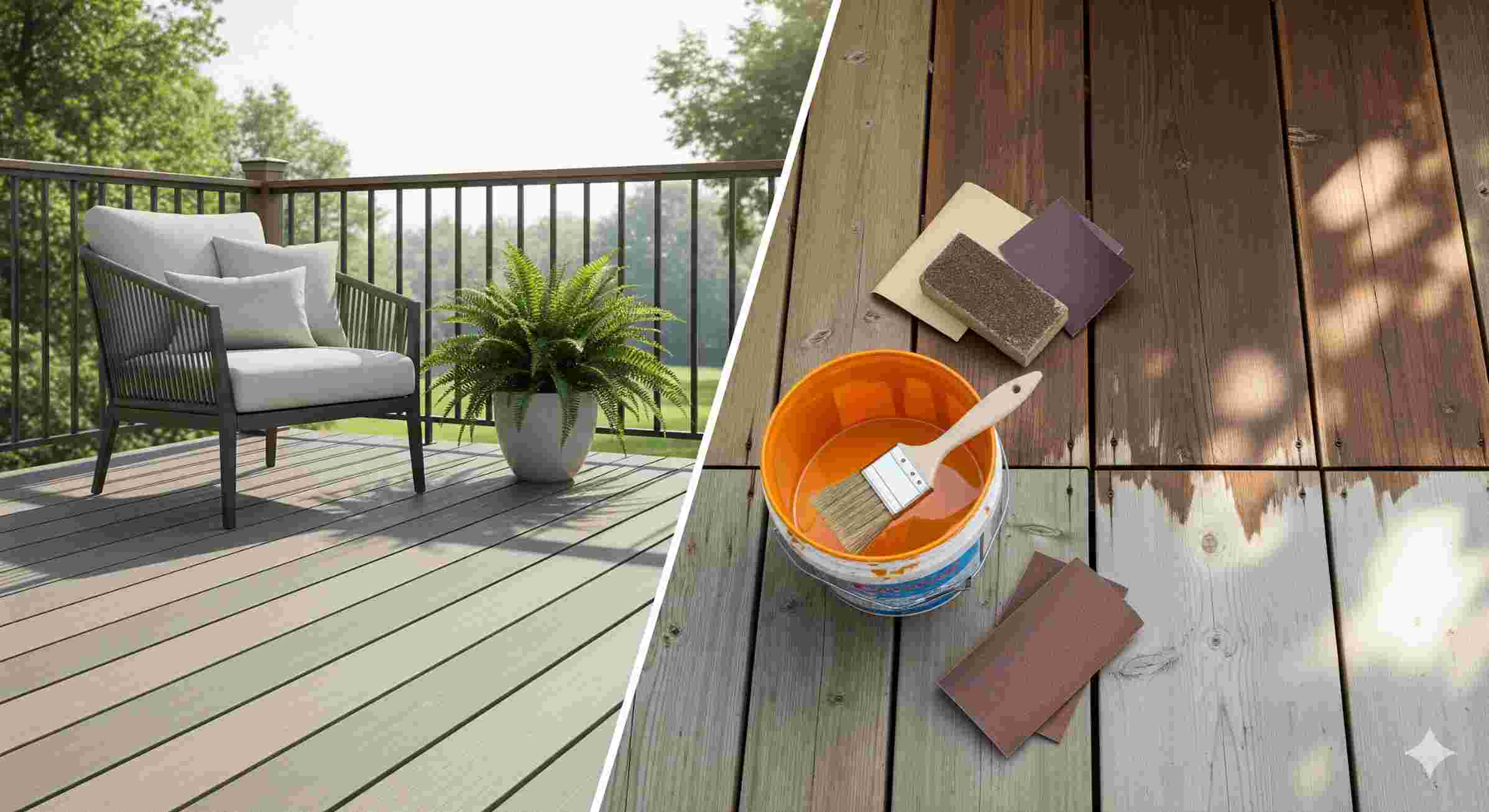
Composite Decking:
Composite materials are engineered for low maintenance. Occasional washing with water and mild soap is often enough to keep them looking clean. No staining, sanding, or sealing is required throughout the deck’s lifespan. This makes it ideal for homeowners who want to enjoy their deck without dedicating weekends to upkeep.
Wood Decking:
Wood requires regular maintenance to maintain its appearance and structural integrity. This includes annual cleaning, staining or sealing every 1–2 years, and monitoring for signs of rot or splintering. Without proper care, the wood may degrade much faster than composite alternatives.
Appearance Over Time
Wood adds a warm, timeless charm to any space, but its appearance can change over time. Sunlight and moisture often cause graying, fading, and uneven color. Wood can also splinter and crack as it ages. Composite decking offers a durable alternative, resisting weather-related damage and maintaining its color and strength. With modern designs that mimic natural wood grain, composite decking lets homeowners enjoy the beauty of timber without the hassle of maintenance.
Cost Comparison Over Time
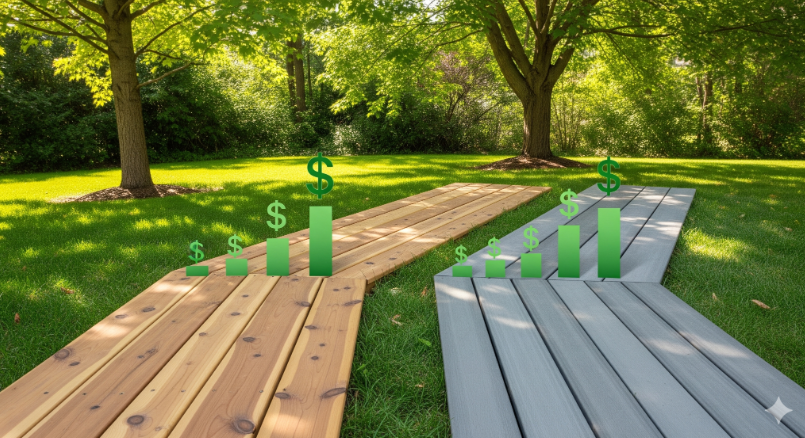
Wood decks usually cost less to install than composite ones, but the long-term costs of maintaining wood—like staining, sealing, and repairs—can add up. Composite decks have a higher upfront price but need little maintenance, often costing less over time. Seasonal changes and humidity can damage wood decks, while composite decking offers durability and low upkeep, making it a worthwhile investment for many homeowners.
Environmental Impact
Both materials have environmental impacts. Wood is renewable but involves tree harvesting and chemical treatments. Composite decking, while made from recycled materials, is not biodegradable. However, its long lifespan reduces waste and conserves resources. For those focused on sustainability, composite decking is a more eco-friendly option.
Best Option for Homes
Due to seasonal weather and moisture risks, experts recommend composite decking installation in Richmond for durable, long-lasting results. This material resists weather damage, needs minimal maintenance, and keeps its look over time, making it perfect for busy homeowners wanting a stylish, functional outdoor space. However, traditional wood decking still appeals to those who value its classic charm and are willing to maintain it.
Conclusion
Choosing between composite and wood decking depends on your lifestyle, budget, and priorities. Composite decking is durable, low-maintenance, and long-lasting, making it great for all climates and busy households. Wood decking offers classic charm but requires more upkeep and has a shorter lifespan. Consider how much time and effort you’re willing to invest before deciding.

